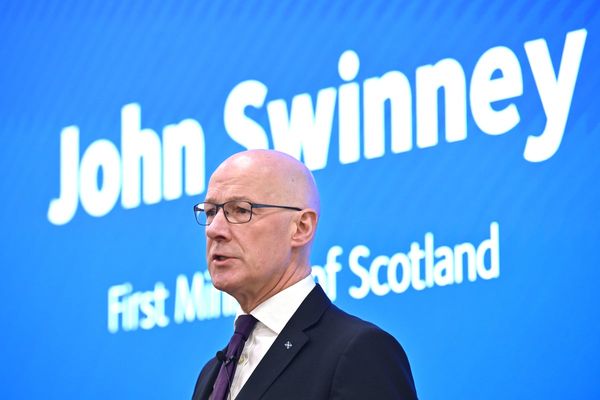Australian shares have closed higher, nearing its five-day session high.
The ASX 200 was up 1.2 per cent to 7,088, with materials and energy stocks leading the way.
Nine of 11 sectors ended higher, with energy the best performing sector, gaining 2.8 per cent today and 7.6 per cent for the past five days.
Among the top movers were Champion Iron (+6.2pc), Auckland International Airport (+5.4pc) and Worley (+5pc).
Meanwhile, Credit Corp (-6.3pc), Block (-5.6pc) and Amcor (-3.5pc) were leading the losses.
Reserve Bank governor Philip Lowe indicated in his first speech of the year at a National Press Club lunch today that the central bank would "take time" before raising interest rates.
He said a rising cash rate was not "imminent".
Yesterday, the benchmark rose to its highest level in a week, after the RBA's decision to hold its cash rate but to end its bond-buying program.
Australian dollar was up 0.1 per cent, at 71.33 US cents, by 05:02pm AEDT.
However, oil prices slipped from seven-year highs, pressured by speculation that producer group OPEC+ could decide to boost supply by more than previously flagged, as well as expectations of a rise in US inventories.
Brent crude oil was up 0.4 per cent, trading at $US89.51 a barrel, by 05:03pm AEDT.
Cost of living pressure on age pensioners
The cost of living was higher in the December 2021 quarter across Australian households, according to the latest data from the Australian Bureau of Statistics (ABS).
The living costs of pensioner and beneficiary households rose by 0.8 per cent in the December quarter, up 3.0 per cent annually to a seven-and-a-half-year high.
The living costs of self-funded retiree households lifted 0.9 per cent during the same period, up 3.3 per cent annually, while age pensioner households increased 0.8 per cent, up 3.4 per cent annually to a decade high.
Michelle Marquardt, head of Prices Statistics, said the surging fuel prices in the past 12 months (+30pc) was the main driver to higher living costs, alongside rising prices in domestic holiday travel and accommodation (+4.8pc) and tobacco (+2.1pc).
"Age pensioner households also experienced the highest annual increase for housing costs, with relatively higher expenditure levels on maintenance and repair and property rates.
"Consequently, this household group had the highest annual living cost increase of 3.4 per cent."
The annual increase for employee households was lower, at 2.6 per cent, thanks to lower mortgage rates, which fell 1.6 per cent in the December quarter and 7.4 per cent over the past 12 months.
"This means that employee households had the lowest annual increase at 2.6 per cent, as mortgages are a higher proportion of their overall expenditure," Ms Marquardt said.
Telstra to invest in telecom infrastructure
Telstra rose 1 per cent to $3.98 after announcing it would invest in two telecommunication infrastructure projects.
They involve building and managing ground infrastructure for Viasat’s global satellite and a 20,000km extension of its existing optical fibre network.
The company said it expected to invest between $1.4 billion and $1.6 billion on both projects over the next five years.
Global stocks rally
Overseas, all three Wall Street benchmarks advanced on Tuesday and the energy index closed at a multi-year high.
However, seesaw trading reflected investor uncertainty about how to play the current market.
The Dow Jones Industrial Average rose 273.38 points, or 0.78 per cent, to 35,405.24, the S&P 500 gained 30.99 points, or 0.69 per cent, to 4,546.54.
The Nasdaq Composite added 106.12 points, or 0.75 per cent, to 14,346.00.
Recent sessions have been choppy, as the prospect of an aggressive rate-hike campaign by the US Federal Reserve looms large and investors seek to position themselves accordingly — a task not made easy by lingering pandemic influences on the economy and geopolitical tension in Europe.
But despite losing 5.3 per cent and 3.3 per cent in January respectively, the S&P 500 and the Dow have now recorded three straight days of gains, with the Nasdaq — which dropped 8.99 per cent in the first month of 2022 — posting four positive sessions in the last five.
It did not look like that would happen earlier in the session, when all three benchmarks traded lower in the wake of data from the Labor Department and the ISM's purchasing managers' index (PMI).
Traders are betting on five rate hikes this year, with some Wall Street analysts expecting seven hikes.
Geopolitical tensions added to market volatility, with Ukraine's President signing a decree to boost his armed forces by 100,000 troops over three years, as European leaders lined up to back him in a stand-off with Russia and the United States demanded immediate Russian de-escalation.
European shares ended higher on Tuesday, recovering some of January's steep losses.
The pan-European STOXX 600 rose 1.3 per cent after January became its worst-performing month since October 2020, when concerns over rising interest rates, inflationary pressures, and geopolitical tensions knocked the index down 4 per cent.
Japan's blue-chip Nikkei rose 0.28 per cent, with MSCI's world stock index up 0.85 per cent after hitting its highest in over a week.
Meanwhile, a number of markets in Asia, including China, were closed for the Lunar New Year holidays.
ABC/Reuters







